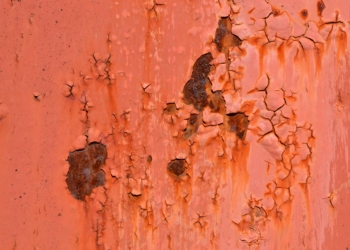In chemical synthesis, scientists work to join together different molecules. Click chemistry is a particular approach where you use highly reliable and efficient reactions in organic chemistry.
Click chemistry is all about making strong, stable bonds between molecules quickly, easily, and without any messy leftovers. The molecules just “click” together — but getting click reactions to work is not easy.

Click reactions
Chemists are sometimes like architects, trying to use different constructs to create the desired output. The problem for chemists is that their tools are very small and it’s difficult to get them together the right way.
Click chemistry is a way of building molecules that’s like snapping Lego blocks together: they click when they connect the right way. It’s a toolbox — a new way of doing molecule reactions and synthesis.
“We have a work toolbox with all the traditional tools that we use in the pharmaceutical industry, for example,” explains Morten Meldal, who received the Nobel Prize for his work on quick chemistry.
Meldal presented his work and the basics of click chemistry at the Lindau Nobel Laureate Meeting. “You can make all sorts of molecules with that. But there are problems. For instance, there’s waste associated with these processes. This is a big problem on large scales.”
Click chemistry offers researchers a new way to synthesize molecules. It’s like snapping molecules together through ‘chemical buckles,’ like Lego pieces or furniture that only fits together in the right orientation.
“Then we have this modern toolbox,” Meldal says, referring to click chemistry. The click chemistry toolbox only has a few reactions, but with these reactions, “we can create very complex molecules, architectures we could never make before.”
In order for a reaction to be a click reaction, a chemical reaction has to:
- happen in ‘one pot’ (or just one reactor);
- not be disturbed by water or oxygen;
- generate minimal and inoffensive byproducts;
- be ‘spring loaded’ — have a thermodynamic force that drives the quick reaction into a single product.
Click chemistry and orthogonal chemistry
Click chemistry is particularly useful in biological settings — remember how we said one of the key conditions is that it doesn’t generate nasty byproducts. It is particularly useful in drug creation and biology, but it has other applications as well (and we’ll get to those in a bit).
In fact, click chemistry greatly benefits from being orthogonal. What that means is that the chemical reaction can occur inside living systems without interfering with native biochemical processes. Let’s rewind a bit.
The 2022 Nobel Prize in Chemistry was awarded to three chemists. Two of them we’ve already mentioned. The third is Carolyn Bertozzi.
Barry Sharpless and Morten Meldal independently worked on click reactions. The reaction took place between azide, a high-energy molecule, and alkyne, a relatively inert and naturally rare molecule. The two are great click partners in the presence of a copper catalyst. This reaction was the first step towards click chemistry, and researchers soon realized that it can be a fantastic way to probe living systems like cells. The problem was copper.
The copper catalyst brings the two click pieces together in an optimal arrangement that snaps them together. But while the two click partners are not toxic, copper itself is.
Carolyn Bertozzi devised a workaround for this issue by removing the copper catalyst from the reaction entirely. Bertozzi tweaked the structure of the molecules and found a way to get the reaction to work without the copper. The click reaction became a bioorthogonal reaction — suddenly, you could do it in the environment of a cell without perturbing it at all.
“We can use this in all sorts of ways,” Meldal explained in his lecture. “It is currently used in medicinal chemistry and diagnostics, biochemistry, surface chemistry, materials, and energy. Every day, we see new publications that use this chemistry one way or the other.”
Click chemistry applications
Click chemistry is a powerful tool with applications ranging from creating new drugs to diagnosis to material science and energy.
The nature of click reactions makes them useful for probing the cellular localization of small molecules. Understanding where these molecules are in the cell can help researchers better understand the mechanisms of action and better tailor drugs or interventions that affect those mechanisms.
“This works because this a toolbox and everything that goes into it is completely orthogonal,” Meldal notes. “It was the chemistry that we have opened with this toolbox.”
Chemists use click reactions to synthesize and modify numerous types of drugs. For instance, it was deployed in the development of anticancer drugs, where the structures used in click chemistry offer great potential. Click chemistry is also useful in some antibacterial and antiviral treatments and in bioconjugation — the chemical strategy used to form a stable covalent link between two biomolecules. Researchers have also used click chemistry to create nanoparticles that deliver drugs to the desired location and at the desired target.
The potential of click chemistry, however, extends far beyond the realm of pharmacology. It is also enabling the creation of novel materials with unprecedented properties.
For instance, scientists are using click reactions to develop self-healing materials, like smartphone screens that repair their own scratches. Last but not least, click chemistry is also enabling the development of environmentally friendly, biodegradable plastics that naturally decompose without damaging the ecosystem. It has huge promise in all sorts of sustainable and green chemistry applications.
A promising future for click chemistry
In the late 1990s, a scientist named Barry Sharpless introduced click chemistry to the world. Sharpless wanted a way to simplify the complex, often daunting world of molecular assembly. He also wanted to make it ‘greener’ and more efficient.
In a landmark paper published in 2001, Sharpless and colleagues described click chemistry and the potential of click chemistry.
Now, some two decades later, the potential is astonishing. We don’t know that many click reactions, but the few ones we know are very versatile and useful. As Sharpless and colleagues themselves explain in the paper:
“Just a handful of good reactions are needed to assemble vast numbers of highly diverse organic molecules. Yet, this easily accessible structural universe has not been mined by the medicinal chemistry community for its nuggets of desirable function.”
The reasons why click chemistry is so important are pretty obvious now:
- new molecular properties are needed everywhere;
- you can get desired properties from joining small molecular building blocks;
- oftentimes, these properties are needed in areas where scientists and engineers lack the skills and equipment to perform such connecting operations reliably — click chemistry can make it much simpler;
- there’s plenty of improvement to develop more click reactions.
Simply put, click reactions can be used to create the medicines that heal us, the fuels that power our homes and vehicles, and even the materials that form the clothes on your back. Simplifying the process by which we build molecules means we can make these life-altering substances more efficiently and effectively.
Click Chemistry: The Molecular LEGO

Click chemistry derives its name from the distinctive click heard when two Lego bricks are snapped together. This audible satisfaction of a secure, robust connection perfectly encapsulates what click chemistry accomplishes at the molecular level.
At its core, click chemistry represents a transformation in the way we perceive and execute chemical synthesis. It turns the intricate process of molecular assembly into a simple, intuitive task akin to clicking together Lego bricks. Just as Lego bricks connect at their studs, molecules join together at their reactive sites to form molecules with the desired properties. The appeal of this method is its simplicity and precision.
Click chemistry is shaping the future of numerous sectors, and as we refine this technique, its impact will only continue to grow. This ingenious method is enabling us to manipulate the building blocks of the universe more efficiently, pushing the boundaries of innovation in myriad fields.
The development of new click reactions and further optimization of existing ones promises to expand our toolbox and make it even more powerful. In laboratories across the globe, researchers are working tirelessly to unlock the full potential of click chemistry, devising more efficient, less wasteful methods of molecular synthesis and creating an unprecedented range of structures.






